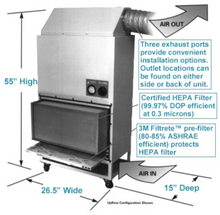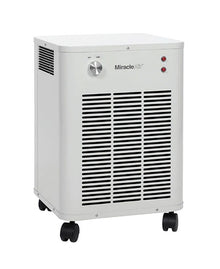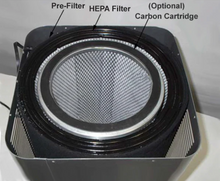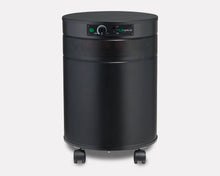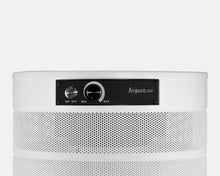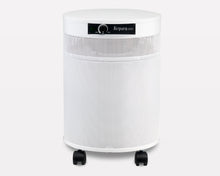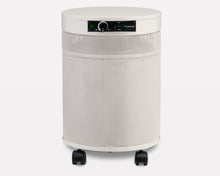A Parent's Guide to Navigating Multiple Chemical Sensitivity (MCS) in Children: Creating a Safe Haven at Home
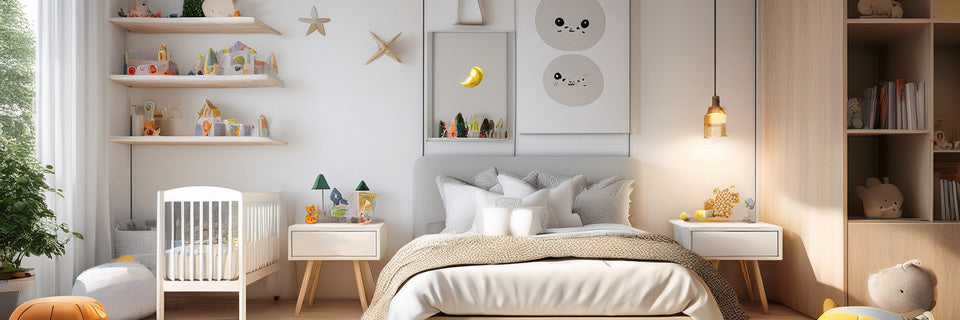
The gentle hum of a happy home, the scent of fresh laundry, the gleam of a newly cleaned floor – for many, these evoke comfort. But for parents whose child struggles with Multiple Chemical Sensitivity (MCS), these seemingly innocuous elements can trigger a cascade of distressing symptoms, transforming a sanctuary into a source of discomfort. If you've found yourself navigating the bewildering world of chemical sensitivities with your child, you're not alone. The challenges are real, but with knowledge and proactive steps, you can create a safe, supportive, and truly healing environment.
This comprehensive guide is designed to empower parents like you. We'll explore what MCS means for children, uncover common household triggers, and provide actionable strategies to set up your home as a low-chemical haven. Our aim is to equip you with the expertise and practical advice to help your child thrive, demonstrating that a confident, healthier future is within reach.
Understanding the Invisible Burden: What is Multiple Chemical Sensitivity?
Imagine a world where everyday scents – a neighbor's perfume, the fumes from a passing car, or even the ink on a newspaper – induce headaches, fatigue, brain fog, or breathing difficulties. This is the reality for individuals with Multiple Chemical Sensitivity (MCS), sometimes referred to as Idiopathic Environmental Intolerance (IEI) or Chemical Intolerance. It's a chronic condition characterized by recurrent adverse reactions to low levels of common chemical agents that are generally tolerated by most people.
While the exact mechanisms of MCS are still a subject of ongoing research and debate within the medical community, its impact on those affected, especially children, is undeniable. Organizations like Johns Hopkins Medicine acknowledge MCS as a condition where individuals are sensitive to a wide range of substances, triggering a variety of non-specific physical and psychological symptoms. The onset can sometimes be traced to an acute, severe chemical exposure or prolonged low-level exposure, after which even minute amounts of chemicals can provoke a reaction.
For children, MCS presents unique complexities. Their developing bodies and systems are often more vulnerable to environmental insults. As UNICEF highlights, children are physiologically more susceptible to air pollution because their brains, lungs, and other organs are still maturing. They also breathe in more oxygen relative to their body weight than adults, leading to a higher intake of airborne pollutants. This heightened vulnerability means that what might be a mild irritant for an adult could significantly impact a child's health, development, and overall well-being. Symptoms in children can manifest as:
- Respiratory issues: Asthma, coughing, shortness of breath, nasal congestion.
- Neurological symptoms: Headaches (often migraines), dizziness, fatigue, difficulty concentrating, memory issues, mood changes, hyperactivity.
- Skin reactions: Rashes, itching.
- Systemic complaints: Muscle and joint aches, nausea, gastrointestinal upset, heart palpitations.
These symptoms can lead to significant disruptions in a child's daily life, affecting their ability to learn, play, and socialize. Parents often face immense challenges in identifying triggers, advocating for their child, and maintaining a household environment that supports their child's health without isolating them. It's a journey that requires patience, vigilance, and a proactive approach to environmental management.
The Hidden Culprits: Identifying Common Chemical Triggers in Your Home
The first crucial step in creating a supportive environment for a child with MCS is identifying and understanding the common chemical triggers lurking in everyday household items. Many of these substances emit Volatile Organic Compounds (VOCs) or other irritating chemicals that can exacerbate MCS symptoms. Based on insights from organizations like Safer Care Victoria and the EPA, here are some of the most prevalent offenders:
- Fragrances and Scented Products: This is perhaps one of the most common and pervasive triggers. From perfumes, colognes, and scented personal care products (shampoos, lotions, deodorants) to laundry detergents, fabric softeners, air fresheners, and scented candles, synthetic fragrances are ubiquitous. These often contain hundreds of undisclosed chemicals, many of which are known irritants or allergens.
- Cleaning Products: Conventional household cleaners are a significant source of VOCs and other harsh chemicals. Ammonia, bleach, phthalates, and other strong-smelling agents in glass cleaners, floor cleaners, bathroom cleaners, and dish soaps can easily trigger reactions.
- Pesticides and Herbicides: Used both indoors and outdoors, these chemicals are designed to be toxic and can linger in the environment long after application. This includes insecticides, ant traps, rodenticides, and lawn care products.
- Building Materials and Furnishings: New homes, renovated spaces, and even new furniture can off-gas chemicals for months or even years. Formaldehyde, a known human carcinogen, is often found in pressed wood products like particleboard, plywood, and fiberboard. VOCs are also prevalent in paints, varnishes, adhesives, new carpeting, and certain upholstery fabrics.
- Plastics and Petrochemicals: Many plastic items, especially soft plastics (like PVC in shower curtains, some toys, or vinyl flooring), can leach chemicals. Petrochemical solvents are also found in various products, including some art supplies and even felt pens.
- Combustion Byproducts: Tobacco smoke is a well-known indoor air pollutant and a major trigger for MCS. Fumes from gas stoves, fireplaces, and even outdoor air pollution (like vehicle emissions or wildfire smoke) can infiltrate the home and cause reactions.
- Mold and Mildew: While not a chemical in the same sense, the mycotoxins and spores released by mold can severely impact individuals with MCS, triggering respiratory and neurological symptoms.
- Certain Medications and Food Additives: Some individuals with MCS may also react to preservatives, artificial colors, flavors, and other additives in food and pharmaceuticals.
Recognizing these potential triggers is the first step toward mitigation. It empowers parents to make informed choices about the products they bring into their home and the materials they use, laying the groundwork for a safer living environment.
Crafting a Low-Chemical Sanctuary: Setting Up Your Home for a Child with MCS
Creating a home environment that minimizes chemical exposure for a child with MCS requires a systematic and often gradual approach. It’s about more than just cleaning; it’s about thoughtful material choices, diligent air quality management, and a shift in household habits. Here are actionable strategies to transform your home into a low-chemical sanctuary:
1. Prioritize Source Removal and Substitution
The most effective strategy is to eliminate or significantly reduce the sources of chemical emissions.
-
Fragrance-Free Zone: This is paramount. Eliminate all scented products from your home:
- Personal Care: Switch to fragrance-free soaps, shampoos, conditioners, lotions, deodorants, and cosmetics for the entire family.
- Laundry: Use unscented, dye-free laundry detergents and avoid fabric softeners or dryer sheets. Consider wool dryer balls as a natural alternative.
- Cleaning: Replace conventional cleaners with natural, unscented alternatives. Vinegar and baking soda are powerful, non-toxic cleaners for many surfaces. Microfiber cloths with water can often clean effectively without chemicals. If purchasing commercial "green" cleaners, always check ingredient lists for hidden fragrances or irritants.
- Air Fresheners: Discontinue all air fresheners, plug-ins, scented candles, and essential oil diffusers. These merely mask odors and introduce more chemicals into the air.
- Pest Management: Avoid chemical pesticides indoors and in immediate outdoor areas surrounding your home. Employ integrated pest management (IPM) strategies, focusing on prevention (sealing entry points, proper food storage, regular cleaning) and non-toxic traps if necessary.
- Hobby Supplies & Art Materials: Be mindful of glues, paints, solvents, and markers. Opt for natural or low-VOC art supplies, especially for your child.
- Old or Contaminated Items: Remove items that are significantly off-gassing, such as old, particleboard furniture, or heavily fragranced items that cannot be thoroughly aired out.
2. Mindful Material Choices: Building and Furnishing Your Haven
What your home is made of, and what you fill it with, profoundly impacts indoor air quality.
- Flooring: Wall-to-wall carpeting can trap allergens, dust, and off-gas VOCs from glues and fibers. If possible, consider replacing carpet with hard, smooth surfaces like solid wood, bamboo, cork, or linoleum. If these materials require glues or finishes, ensure they are low or no-VOC. If removing carpet isn't feasible, ensure regular, thorough vacuuming with a HEPA-filtered vacuum.
- Paint and Finishes: When painting or renovating, always choose low-VOC or zero-VOC paints, primers, and sealants. Allow ample ventilation during and after painting, ideally for several days or weeks before your child re-enters the space.
- Furniture: Opt for solid wood furniture instead of particleboard or MDF, which often contain formaldehyde-based glues. Avoid furniture with stain-resistant treatments or antimicrobial chemicals. For upholstery, choose natural materials like cotton, wool, or down instead of synthetic foams that may contain flame retardants.
- Bedding and Clothing: Prioritize natural fibers such as organic cotton, linen, and wool for bedding, mattresses, and clothing. These materials are less likely to contain synthetic dyes, finishes, or flame retardants that can off-gas or irritate sensitive skin. Wash all new textiles thoroughly before use.
- Toys: Be selective with toys, especially for younger children who put objects in their mouths. Avoid toys made of PVC (vinyl) and opt for those made of unpainted wood, natural rubber, organic cotton, or other non-toxic materials.
3. Enhancing Indoor Air Quality: Ventilation and Filtration
Even with source reduction, pollutants can still enter your home from outside or from residual off-gassing. Proactive air management is essential.
-
Ventilation is Key:
- Natural Ventilation: Open windows and doors whenever outdoor air quality permits, especially after cleaning, cooking, or bringing new items into the home. Cross-ventilation is most effective.
- Exhaust Fans: Use kitchen and bathroom exhaust fans to remove moisture and odors.
- HVAC System: Ensure your HVAC system is well-maintained, with clean filters. Consider upgrading to higher-efficiency MERV filters if your system can handle them.
-
The Role of Air Purifiers: While not a standalone solution, a high-quality air purifier can be a valuable tool in managing indoor air quality for a child with MCS. However, it's critical to choose the right type.
- HEPA Filters: Essential for capturing particulate matter like dust, pollen, pet dander, mold spores, and some bacteria and viruses.
- Activated Carbon Filters: Crucially important for MCS. Unlike HEPA filters, activated carbon is designed to adsorb (trap) gaseous pollutants, including VOCs, chemical fumes, odors, and some formaldehyde. For MCS, prioritize purifiers with a substantial amount (kilos, not grams) of high-quality activated carbon. As Breathing Space notes, "a Hepa filter on its own is virtually powerless when it comes to removing VOC's from the air... These harmful chemicals need to be adsorbed after they come through the Hepa filter and before they re-enter the room."
- Avoid Ozone Generators: Some "air cleaners" on the market generate ozone, which is a lung irritant and can actually worsen respiratory symptoms. The EPA and American Academy of Pediatrics (AAP) specifically advise against using ozone-generating air cleaners.
- Sizing and Placement: Choose an air purifier sized appropriately for the room, aiming for at least 5 air changes per hour (ACH). Place it in the child's bedroom or primary living space. You can calculate needs based on the room size.
- "Outgassing" New Units: Some individuals with severe MCS may even react to the plastics or components of a new air purifier itself. It can be helpful to run a new unit in a garage or well-ventilated area for a few days to "outgas" any manufacturing odors before bringing it into the child's living space.
- Filter Replacement: Adhere strictly to the manufacturer's recommendations for filter replacement, as saturated filters lose effectiveness.
4. Water and Food Considerations
While this guide focuses on airborne chemicals, it's worth noting that some children with MCS may also react to chemicals in water or food.
- Water Filtration: Consider a high-quality water filter for drinking and bathing to reduce exposure to chlorine, chloramines, and other waterborne contaminants.
- Organic Foods: Opt for organic, unprocessed foods to minimize exposure to pesticides, herbicides, and artificial additives.
Living with MCS: Beyond the Home
Creating a safe home is a monumental achievement, but MCS impacts life outside the four walls as well.
- Communication is Key: Educate family, friends, and school staff about your child's sensitivities. Provide them with a list of triggers and safe alternatives.
- Advocacy at School: Work with your child's school to implement fragrance-free policies, ensure proper ventilation, and minimize chemical use in classrooms and common areas. The EPA provides resources for improving indoor air quality in schools and childcare facilities.
- Portable Solutions: For older children, a small, portable air purifier with a carbon filter can offer some relief when visiting less controlled environments, if tolerated.
- Empowerment: Involve your child in the process as they get older. Teach them about their triggers and how to advocate for themselves. This fosters a sense of control and reduces anxiety.
A Breath of Fresh Air: A Credible Conclusion
Navigating Multiple Chemical Sensitivity in children is a challenging but navigable journey. By understanding the nature of MCS, diligently identifying and removing chemical triggers, making informed material choices for your home, and strategically utilizing air purification systems, you can significantly improve your child's quality of life. Remember, this isn't about perfection, but about creating the safest, most supportive environment possible.
The core principle remains: prioritize source reduction. Solutions like air purifiers, particularly those with robust activated carbon filters, can help when used as part of a comprehensive strategy to manage indoor air quality and reduce chemical exposure. The ongoing research into MCS, coupled with a growing awareness of indoor air pollution's impact on children's health, means that more resources and solutions are constantly emerging. Stay informed, remain proactive, and take comfort in knowing that every step you take brings a breath of fresh air, literally and figuratively, to your child's life.
Sources & Further Reading:
- Johns Hopkins Medicine. Multiple Chemical Sensitivity. Available at: https://www.hopkinsmedicine.org/health/conditions-and-diseases/multiple-chemical-sensitivity
- Safer Care Victoria. Multiple Chemical Sensitivities - Factsheet. (A recent publication, while not a peer-reviewed study, provides practical insights from a healthcare perspective). Available at: https://www.safercare.vic.gov.au/sites/default/files/2023-07/MCS%20Factsheet_Final%20Version.pdf
- Breathing Space. How to choose an air purifier for Multiple Chemical Sensitivity (MCS). (Provides excellent practical advice on air purifier selection for MCS). Available at: https://www.breathingspace.co.uk/blogs/blog/how-to-choose-an-air-purifier-chemical-sensitivity-relief
- U.S. Environmental Protection Agency (EPA). Indoor Air Quality (IAQ) in Schools. Available at: https://www.epa.gov/iaq-schools (While focused on schools, many principles apply to homes).
- American Academy of Pediatrics (AAP). Indoor Air Pollutants. Available at: https://www.aap.org/en/patient-care/environmental-health/promoting-healthy-environments-for-children/indoor-air-pollutants/
- Unicef. Air pollution | Children's Environmental Health Collaborative. Available at: https://ceh.unicef.org/spotlight-risk/air-pollution
Frequently Asked Questions (FAQ)
Q1: Is Multiple Chemical Sensitivity a recognized medical condition?
A1: While the exact underlying mechanisms are still being researched and debated, many medical professionals and organizations, including Johns Hopkins Medicine, acknowledge the existence of chemical sensitivity and its impact on individuals. It is often referred to as Idiopathic Environmental Intolerance (IEI). Diagnostic criteria often involve reproducible symptoms from low-level exposure to multiple unrelated chemicals, affecting multiple organ systems, with symptoms improving upon removal of the triggers.
Q2: Can a child "outgrow" MCS?
A2: MCS is generally considered a chronic condition, and there's no guarantee a child will "outgrow" it. However, consistent avoidance of triggers and a focus on creating a low-chemical environment can significantly reduce symptoms and improve their quality of life. Early intervention and environmental control are key.
Q3: How quickly will I see results after making changes to my home?
A3: The timeline for improvement varies greatly depending on the individual child's sensitivity, the severity of their MCS, and the extent of changes made. Some parents report immediate relief from acute symptoms once major triggers are removed. For chronic symptoms, it may take weeks or months to notice a significant improvement as the body has time to recover from persistent exposure. Patience and consistency are vital.
Q4: Are there specific air purifier brands or models you recommend for MCS?
A4: We cannot recommend specific brands as individual sensitivities vary, and product formulations can change. However, when choosing an air purifier for MCS, look for units that:
* Do NOT produce ozone.
* Feature a substantial amount of activated carbon (not just a thin pre-filter with carbon coating) in addition to a true HEPA filter.
* Are sized appropriately for the room's square footage to achieve at least 5 air changes per hour (ACH).
* Have a good return policy, as some individuals with severe MCS may react to the unit itself.
Q5: What if I can't afford to replace all my furniture or flooring?
A5: Creating a low-chemical home can be a gradual process. Start with the most impactful changes first. Focus on source removal (fragrances, harsh cleaners), ensuring good ventilation, and investing in a high-quality air purifier for the child's primary living space. As budget allows, gradually replace older items that off-gas significantly with safer alternatives. Even small changes can make a big difference.


